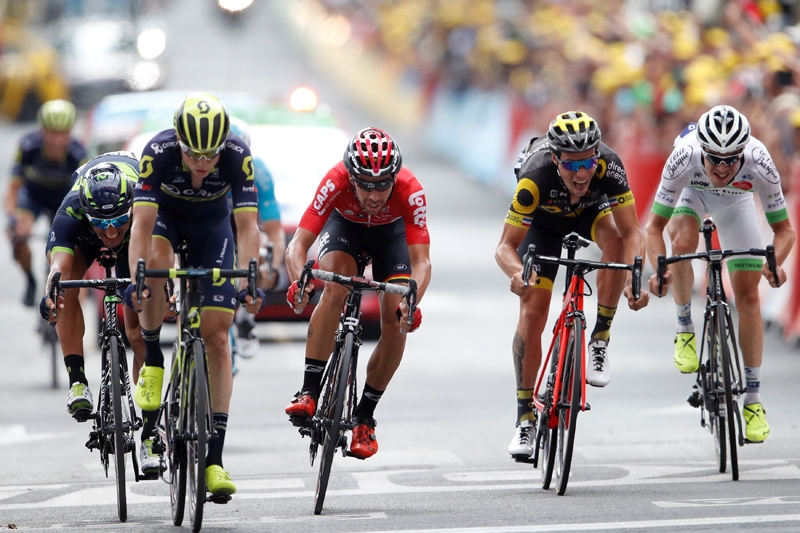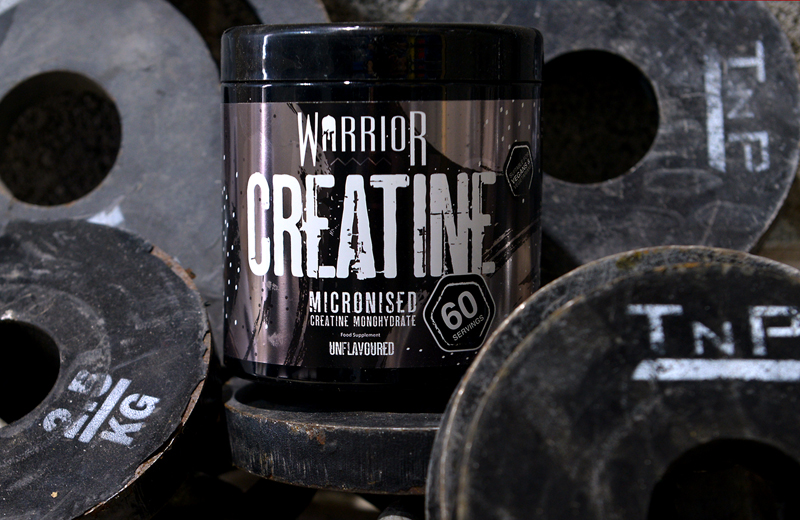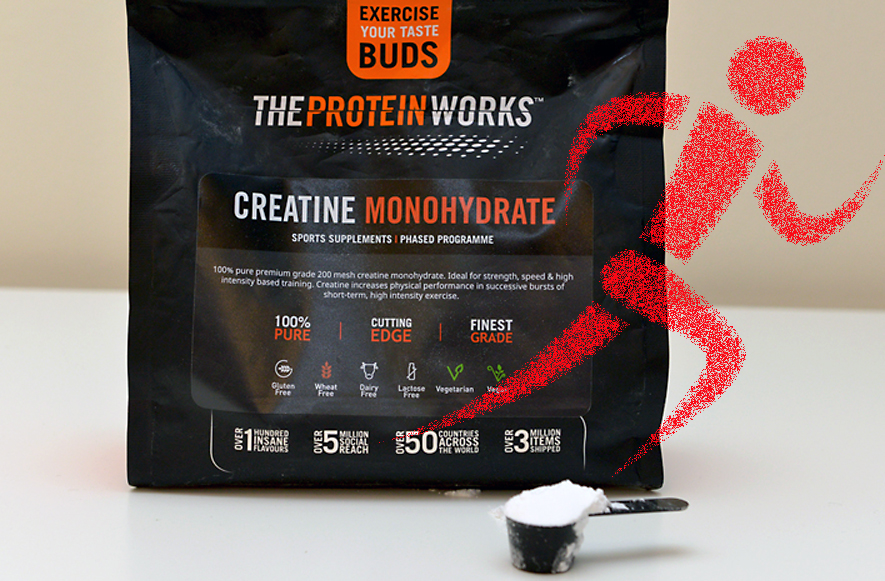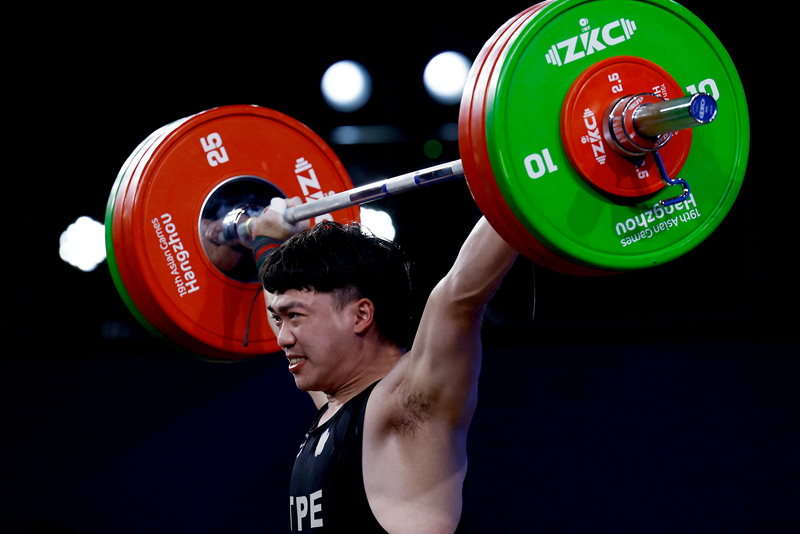You are viewing 1 of your 1 free articles. For unlimited access take a risk-free trial
Phosphate firepower: reality or myth?

Can sodium phosphate improve performance and should endurance athletes consider its use? Andrew Hamilton looks at the evidence
Many of you reading this will have had your training and competition dramatically curtailed due to the coronavirus movement restrictions currently in place across many parts of the globe. But once sport begins to resume again (and it will), the imperative will be to get back up to speed and maximum fitness as rapidly as possible. As part of this process, many athletes will no doubt be tempted to use ergogenic nutritional aids – not only to support training, but also to boost performance in early competition.Not only caffeine
One of the most thoroughly researched and effective ergogenic, endurance-enhancing supplements is caffeine. Numerous studies have demonstrated that caffeine can significantly enhance performance by extending endurance and reducing fatigue, probably by blocking the passage of ‘fatigue signals’ to the brain(1-6). However, there are other ergogenic aids that are known to enhance performance. One of these – sodium bicarbonate – has been popular with sprint and power athletes for many years. However, the downsides of bicarbonate ingestion include possible gastric upsets/nausea, and the fact that most of the benefits relate to high-intensity rather than endurance exercise performance(7,8) (for a more detailed discussion of bicarbonate, see this article).Phosphate firepower
A lesser known and less-researched supplement is sodium phosphate. Sodium phosphate is a soluble ‘salt’ of phosphorous. Phosphorous is an extremely important mineral in the body, especially when it comes to exercise. In particular, muscles use phosphorous in the form of phosphates to make ATP and CP, two high-energy chemicals which provide the energy necessary for muscle contractions. Surplus phosphates also act as a chemical ‘buffer’ in the blood, preventing unwanted increases in muscle acidity and may increase the flow of oxygen from the red blood cells into muscles during more intense exercise.Using phosphate in the form of ingested sodium phosphate to enhance performance is not a new idea. Back in the 90s, phosphate supplementation became a hot topic after some research seemed to indicate that the consumption of about four grams of sodium phosphate per day for three days lowered lactic-acid levels and increased the oxygen uptake capacity of well-trained distance runners(9). However, there was no definitive effect on running performance, and subsequent studies into phosphate and athletic performance also produced rather mixed results, which meant that sodium phosphate soon fell off the radar as a potential performance supplement. The nail in the coffin was the arrival of a proven performance enhancer in the same decade – creatine – and the rest as they say is history.
Rekindled interest
Creatine and caffeine were proving very popular among athletes, and had plenty of peer-reviewed studies confirming their efficacy. The problem for endurance athletes is that the benefits of caffeine were really only apparent in event over 60 minutes’ duration, while creatine supplementation was only proving effective for high-intensity, short-duration anaerobic-type events last a few minutes at most(10). In theory at least, sodium phosphate should be able to improve performance in the 10-60 minute time range, and in 2008, the interest in sodium phosphate was rekindled by a randomized double-blind crossover study on 10-mile time trialing performance in cyclists(11).In this study six trained male cyclists with high fitness levels (VO2max 64.1mls/kg/min) ingested either one gram of sodium phosphate or a lactose placebo four times per day for six days prior to performing a 16.1 km (10 mile) cycling time-trial under laboratory conditions. The cyclists performed two trials each – one with sodium phosphate and one with the inert placebo. Power output and heart rate were continually recorded throughout each test, and at two points during each time-trial expired air samples and capillary blood samples were taken. There was a 14-day period between each of the supplemented time-trials.
The results showed that when the cyclists had ingested sodium phosphate they completed the time trial faster and at a higher average power output (347 watts sodium phosphate; 322 watts placebo). They also demonstrated slightly higher oxygen uptake values, although the differences were small and not big enough to be considered significant. On the face of it, these findings were very persuasive; however, the value of this study was somewhat limited by the small sample size (6 subjects).
Aussie research
Following on, Australian research on sodium phosphate in athletes published in 2013 studied the effects of repeated doses of phosphate over a period of time (akin to the loading phase often used by athletes when supplementing creatine) and came up with some intriguing results(12). In this study, scientists looked at the potential additive effects of repeated sodium phosphate supplementation on cycling time trial performance and peak oxygen uptake (VO2max).Nine well-trained male cyclists completed a baseline time trial (where they had to complete a 1000kJ total workload) and then 48 hours later, a test of VO2max. After this, the cyclists ingested either 50mg·per kilo of bodyweight of sodium phosphate for six days prior to performing these tests again to see if there were any performance differences. Following this, there was a 14-day ‘washout period’ and then the loading phase began again to see if there was a cumulative effective – ie whether there were performance gains after a second loading phase that weren’t apparent after the first. For good measure, the researchers also included a third loading phase with an inert placebo supplement. The purpose of this phase was to ensure that any performance gains were down to the sodium phosphate – not the placebo effect of taking a supplement (the cyclists didn’t know which of the 3 loading phases used the placebo supplement).
Results showed that taking the sodium phosphate resulted in slightly quicker times than those recorded in the baseline trials (the cyclists typically knocked 60-70 seconds off their baseline times of around 56 minutes). However, statistically, this improvement was too small for the scientists to be confident they had observed a meaningful difference. What wasn’t in doubt however was that compared to the placebo phase, the cyclists’ average power output was significantly greater during time trial performance at the quarter and halfway time points following the second loading phase. Furthermore, the average VO2max measurements of the cyclists were around 3.5-4.3 % greater after the first sodium phosphate loading phase. Even more surprisingly, these VO2max figure rose again after the second phase of supplementation; compared to the placebo supplement and the baseline measurements, the cyclists’ VO2max figure were around 7.1-7.7% higher after two sodium phosphate loading phases.
This study appeared to show that repeated sodium phosphate supplementation, ingested either 15 or 35 days after initial loading, can boost VO2max and average power output during an all-out sustained effort such as a time trial. But what was less clear is whether this was able to translate into actual performance gains in a race environment. Although knocking a minute off a time trial lasting around 50 minutes is not to be sneezed at, once again, this was a small sample size to draw definitive conclusions.
As if to underline that uncertainty, the same group of researchers carried out a study on female cyclists and sodium phosphate supplementation the following year(13). Thirteen cyclists participated in a randomized, placebo-controlled study where they completed four separate time trials after ingesting either a placebo, or one of three different doses (25, 50 or 75mgs per kilo per day) for six days. The results showed that there were no significant time trial performance differences between any of the supplementation protocols. Likewise, the cyclists’ average and peak power output did not significantly differ between any of the trials.
Confusion
Just to add confusion, yet another study carried out by the Perth scientists the following year (2015) looked at sodium phosphate supplementation for time trial performance at various points over the 6-day supplementation period(14). Seventeen trained male cyclists were randomized to six days of sodium phosphate supplementation (50 mg per kilo of fat-free-mass per day) or placebo. The cycling trial consisted of four sets of 6 × 15 seconds and a time-trial consisting of two 5-minute efforts on days 1 and 4 post-loading. The results showed that sodium phosphate supplementation DID progressively increase mean power output (374 watts baseline; 398 watts day 1; 393 watts day 4), but that most of these gains occurred after just one day of supplementation, which suggests that a 6-day supplementation protocol might not be necessary. Unfortunately however, this study didn’t actually look at whether supplementation shortened time trial times, which of course is the acid test of any sports supplement!And finally
Research on sodium phosphate for exercise performance went quiet for a few years, but an excellent study on sodium phosphate and 20km time trialing performance was published last year, which seems to provide some more robust data(15). Using a randomized, double-blind, crossover design (the most scientifically rigorous) and a decent sample size, 20 endurance-trained male cyclists completed two supplementation trials – sodium phosphate (50mgs per kilo per day) or placebo - separated by a 14-day washout period. Each trial consisted of ten minutes of cycling at 65% V̇O2max (easy-moderate intensity) followed by a 20 km time trial. Expired air was monitored throughout each trial for oxygen consumption characteristics, along with heart rate, ratings of perceived exertion and blood lactate concentration. The results were fairly clear cut; there were no effects of supplementation on time-trial performance, with the subjects averaging 32.8 minutes in both trials. This was despite the fact that blood lactate levels were slightly higher after the sodium phosphate trial, suggesting they had actually been working at a slightly higher power output.Making sense
Theoretically at least, the use of sodium phosphate seems to offer benefits due to the role of phosphorous in the form of phosphates for energy release in muscle. And because there’s little available to boost performance for events in the 10-60 minute range, the notion that sodium phosphate could produce benefits is appealing. Overall, the evidence does seem to indicate that athletes supplementing sodium phosphate can work at higher oxygen uptake levels. And if your goal is to burn a given amount of calories in a given time period, it could be beneficial.In real sport of course, we race against the clock or each other. And this is where the evidence for sodium phosphate is lacking. Not one single study has demonstrated a statistically significant effect for faster times after sodium phosphate supplementation. At this point, you may be asking ‘if sodium phosphate can help you work harder, why can’t it make you faster?’ The answer to this is not known. One possibility is that although muscles can absorb more oxygen and work harder, this comes at the cost of reduced efficiency (read more about muscle efficiency in this article), although this is pure speculation. Overall then, we can and must conclude that (until further evidence emerges) while sodium phosphate is one of those supplements that promises much, it ultimately fails to deliver, and cannot therefore be recommended as part of your nutritional armory. Stick to proven supplements such as caffeine, make sure your carbohydrate nutrition is optimized and maximize the quality of your day-to-day diet!
References
- J Appl Physiol.; 93(3): 990-9, 2002
- Int J Sport Nut & Ex Metab.; 14(6): 626-46, 2004
- J Sports Sci 2004, 22:127-41
- Int J of Sport Nutr 1995, 5:S84-99
- Int J Sport Nutr Exerc Metab 2000; 10:436-437
- Med Sci Sports Exerc 2000; 32 1958 1963
- Int J Sports Med. 2010 Nov;31(11):797-802
- J Strength Cond Res. 2010 Nov;24(11):3105-11
- Med Sci Sports Exerc. 1990 Apr;22(2):250-6
- Sports Health. 2018 Jan-Feb; 10(1): 31–34
- J Sci Med Sport. 2008 Sep;11(5):464-8
- Int J Sport Nutr Exerc Metab. 2013 Apr; 23(2):187-94
- J Sports Sci Med. 2014 Sep 1;13(3):469-75
- J Sports Sci. 2015;33(11):1109-16
- J Diet Suppl. 2019;16(5):564-575
Newsletter Sign Up
Testimonials
Dr. Alexandra Fandetti-Robin, Back & Body Chiropractic
Elspeth Cowell MSCh DpodM SRCh HCPC reg
William Hunter, Nuffield Health
Newsletter Sign Up
Coaches Testimonials
Dr. Alexandra Fandetti-Robin, Back & Body Chiropractic
Elspeth Cowell MSCh DpodM SRCh HCPC reg
William Hunter, Nuffield Health
Keep up with latest sports science research and apply it to maximize performance
Today you have the chance to join a group of athletes, and sports coaches/trainers who all have something special in common...
They use the latest research to improve performance for themselves and their clients - both athletes and sports teams - with help from global specialists in the fields of sports science, sports medicine and sports psychology.
They do this by reading Sports Performance Bulletin, an easy-to-digest but serious-minded journal dedicated to high performance sports. SPB offers a wealth of information and insight into the latest research, in an easily-accessible and understood format, along with a wealth of practical recommendations.
*includes 3 coaching manuals
Get Inspired
All the latest techniques and approaches
Sports Performance Bulletin helps dedicated endurance athletes improve their performance. Sense-checking the latest sports science research, and sourcing evidence and case studies to support findings, Sports Performance Bulletin turns proven insights into easily digestible practical advice. Supporting athletes, coaches and professionals who wish to ensure their guidance and programmes are kept right up to date and based on credible science.












